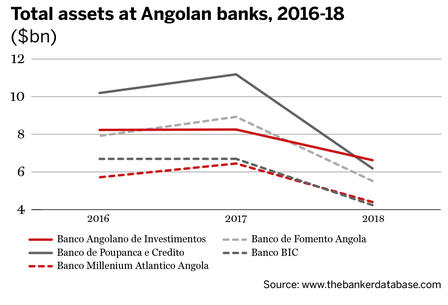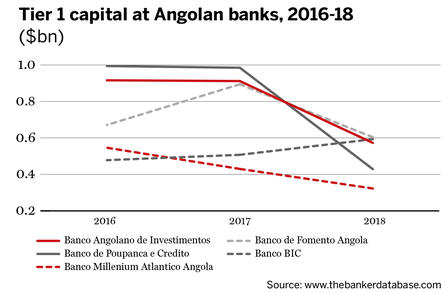As Angola makes tentative steps towards a stronger economy, improvements in asset quality are still needed at its banks. Marie Kemplay reports.
In November 2019, Angola issued its first bonds since securing an International Monetary Fund (IMF) support package in 2018 – raising $3bn from yield-hungry investors attracted by yields of 8% and 9.125%, respectively – and tentative signs of progress in its economy.
Since taking office in 2017, president João Lourenço has embarked on efforts to diversify Angola’s economy away from a heavy dependence on oil, but there is still considerable work to be done on improving its economic outlook. For instance, in 2018, Angola’s national debt stood at around 89% of GDP.
Something of a turnaround is also needed for Angola’s banks. Asset quality has continued to be impaired, with non-performing loan (NPL) levels creeping up in the years following the 2014 oil shock. The NPL ratio across all of the country’s banks stood at 31.2% in 2018, with state-owned Banco de Poupança e Crédito (BPC) topping the list with a ratio of 40.2%.
Angola’s central bank is currently assessing asset quality in the banking sector and is expected to announce increased capital requirements for some banks at the end of 2019. Tier 1 capital has decreased at four out of five of the biggest banks since 2016, matching an overall decrease in total assets on banks’ balance sheets over the same time period.




